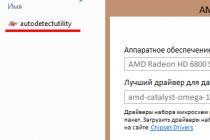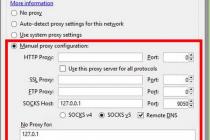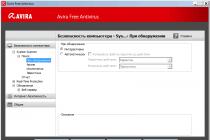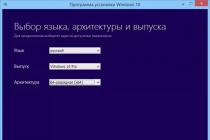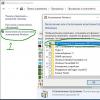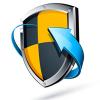V electronic devices One of the most important elements that ensure the operation of the entire system is memory, which is divided into internal and external. Elements internal memory consider RAM, ROM and CPU cache. External- these are all kinds of drives that connect to a computer from outside - hard drives flash drives, memory cards, etc.
Read-only memory (ROM) is used to store data that cannot be changed during operation, random access memory (RAM) to place information from the processes currently occurring in the system in its cells, and cache memory is used for urgent processing of signals by the microprocessor .
What is ROM
ROM or ROM (Read only memory - Read only) - a typical storage device that does not change information, included in almost every component of a PC and phone and required to start and run all elements of the system. The content in the ROM is written by the hardware manufacturer and contains directives for pre-testing and starting the device.
ROM properties are independence from power, the impossibility of rewriting and the ability to store information for long periods of time. The information contained in the ROM is entered by the developers once, and the hardware does not allow it to be erased, it is stored until the end of the computer or phone's service, or its breakdown. Structurally ROM protected from damage during voltage drops, therefore, only mechanical damage can damage the information contained.
By architecture, they are divided into masked and programmable:
- In masks devices, information is entered using a typical template at the final stage of production. The contained data cannot be overwritten by the user. The separating components are typical pnp elements of transistors or diodes.
- In programmable ROMs, information is presented in the form of a two-dimensional matrix of conductive elements, between which there is a pn junction of a semiconductor element and a metal jumper. Programming such a memory occurs by removing or creating jumpers by means of a current of high amplitude and duration.
Main functions
ROM memory blocks contain information on managing the hardware of a given device. The ROM includes the following subroutines:
- Directive start and control for the operation of the microprocessor.
- A program that checks performance and integrity all hardware contained in a computer or phone.
- A program that starts and ends a system.
- subroutines that control peripheral equipment and I/O modules.
- Address data operating system on physical storage.
Architecture
Persistent storage devices are made in the form two-dimensional array. The elements of the array are sets of conductors, some of which are not affected, other cells are destroyed. Conductive elements are the simplest switches and form a matrix by connecting them in turn to rows and rows.
If the conductor is closed, it contains a logical zero, open - a logical unit. Thus, data in binary code is entered into a two-dimensional array of physical elements, which is read by the microprocessor.
Varieties
Depending on the method of manufacturing the device, ROM is divided into:
- Ordinary factory-created. The data in such a device does not change.
- Programmable ROMs that allow the program to be changed once.
- Erasable firmware, which allows you to clear data from elements and overwrite them, for example, using ultraviolet light.
- Electrically clearable, rewritable elements that allow multiple change. This type is used in HDD, SSD, Flash and other drives. The BIOS on motherboards is written on the same microcircuit.
- Magnetic, in which information was stored on magnetized areas, alternating with non-magnetized ones. They could be overwritten.
Difference between RAM and ROM

The differences between the two types of hardware are in its safety when the power is turned off, speed and the ability to access data.
V random access memory(Random access memory or RAM) information is contained in sequentially arranged cells, each of which can be accessed through software interfaces . RAM contains data about currently running processes in the system, such as programs, games, contains the values of variables and lists of data in stacks and queues. When you turn off your computer or phone, RAM memory completely cleared. Compared to ROM memory, it has faster access speed and power consumption.
ROM memory is slower and uses less power to run. The main difference lies in the inability to change the incoming data in the ROM, while the information in the RAM is constantly changing.
The main classification parameters of the memory
| Parameter | Designation | Definition |
| Information capacity | N | The number of bits of memory in the memory drive |
| Number of words and memory | P | Number of word addresses in storage drive |
| Bit depth | T | The number of bits in the memory drive |
| Output fanout | Kp | The number of unit loads (inputs of other ICs) that can be simultaneously connected to the output of the memory |
| Number of reprogramming cycles | Ncy | The number of write-erase cycles at which the operability of the memory is maintained |
| Power consumption | p CC | Power consumption of the charger in the set mode of operation |
| Power consumption in storage mode | p CCS | The power consumed by the memory when storing information in the non-selection mode |
| Information storage time | tSG | The time interval during which the memory in a given mode stores information |
3U static parameters
An important advantage of ROM over RAM is that information is retained when the power is turned off. The cost of a bit of information stored in ROM can be almost an order of magnitude lower than in RAM. Permanent memory can be implemented based on various physical principles.
The following types of ROM are currently in use:
MASK ROMS are programmed by their manufacturer, who, according to the information prepared by the user, makes photo templates, with the help of which he enters this information into the ROM chip during the production process. This method is the cheapest and is intended for large-scale production of ROMs.
Masked ROMs are built on the basis of diodes, bipolar and MIS transistors. In diode ROMs, diodes are on at those intersections of the matrix that correspond to the entry "1", and are absent in the places where "0" should be written. The external control circuits for diode ROMs are very simple. Since the diode matrix is a galvanically coupled element, the output signals have the same shape as the input ones. Permanent memories on MIS transistors are somewhat easier to manufacture than bipolar ones.
Masked ROMs are highly reliable, but it is impossible to change the information in the ROM without making a new IC, which is especially inconvenient at the stage of developing the system programs.
USER PROGRAMMABLE ROM are more versatile and therefore more expensive. They are matrices of bipolar devices with fusible jumpers (their simplified diagram is shown in Fig. 17.7), the connections of which with the address and bit buses are destroyed when the code is entered on special PROGRAMMERS. These devices generate voltages necessary and sufficient to burn out the fusible links in the selected ROM memory elements.
On fig. . PP fuses are shown in the form of fuses included in the emitters of multi-emitter VТo...VТp transistors. The programmable elements are connected between the emitters of the matrix transistors and the bit lines. The presence of a jumper corresponds to logical 0 at the output of the readout amplifier, and the absence of a jumper corresponds to a logical one. The process of writing information into the circuit is the selective destruction of fusible jumpers by the current provided by the programming device.
ONE TIME PROGRAMMABLE ROM (PROM) the drive is made on the basis of cells. Permanent memories of this type allow only a single entry of information in the cell. When programming, these fusible jumpers made of nichrome or other refractory material are burned out using a special programming device. The jumpers are burned in the programming mode by a series of pulses according to a special program.
To increase the reliability of the ROM operation, the programming technique provides for the supply of a series of 40,.. 100 pulses after fixing the moment of jumper burnout, as well as the obligatory thermal training of the programmed ROM at a temperature (about 100 ° C).
More reliable are microcircuits with jumpers made of polycrystalline silicon, in which the process of irreversible transition of polysilicon from a conductive state to a non-conductive one occurs under the action of heating caused by the flow of current.
Programming mode support circuits are usually located on the chip itself, and the programming process proceeds as follows.
1) The address of the selected cell is applied to the address inputs.
2) The supply voltage of the +U microcircuit is increased to the programming voltage +10 V necessary to create a current, I ³ 400 mA, sufficient to melt the jumper.
3) A voltage of +15 V with a current of not more than 100 mA is applied to the programming input V through a resistor
FIRMWARE ROM (EPROM) The most widespread among them are ROMs with ultraviolet erasure and with electrical erasure and recording of information.
Microcircuits in which information is erased using ultraviolet radiation (UFPROM) have: the possibility of multiple programming, a fairly short access time and power consumption, and a large capacity.
The storage element in UV-erased ROM is a MOSFET. Information about the contents of this cell is stored as a charge on the second gate of the MOSFET. If it is necessary to reprogram the microcircuit, the previously recorded information is erased with ultraviolet light c l £ 400 μm (the source can be a DRT220 or DRT375 lamp) through a transparent quartz window on the surface of the microcircuit housing. UV radiation discharges the floating gate of the MOSFET. The storage time of information in ROM microcircuits of this type is determined by the quality of the gate dielectric and for modern microcircuits it is ten years or more.
ROM chips with electrical erasure of information are popular with developers of microprocessor technology due to the ability to quickly erase and write, a large allowable number of information rewriting cycles (10,000 times or more). However, they are quite expensive and complex compared to ROM chips with UV erasure, and therefore they are inferior to the latter in terms of their use in microprocessor equipment.
The basis of the memory cell in EEPROM is a floating-gate MOSFET, the same as in UV-Erase ROM. But in microcircuits of this type, technological methods provide the possibility of reverse tunneling, i.e. selection of electrons from the floating gate, which allows you to selectively erase the entered information.
FERROELECTRICITY, the electrical analogue of ferromagnetism. Just as in ferromagnetic substances, when placed in a magnetic field, residual magnetic polarization (moment) appears, in ferroelectric dielectrics placed in an electric field, residual electric polarization occurs.
The microscopic cause of ferroelectricity is the presence of atomic (or molecular) dipoles inside the substance. These dipoles are oriented by an external electric field and remain oriented after the field is removed; switching the direction of the field to the opposite leads to the reverse orientation of the dipoles. The fundamental difference between ferroelectricity and ferromagnetism is that free electric charges can shield the electric fields created by electric dipoles, and this makes direct observation of static polarization difficult. Polarization is usually measured by the so-called hysteresis loop. The sample is placed between the plates of the capacitor, which are supplied with AC voltage E. On the oscilloscope screen, a curve is recorded of the dependence of the charge arising on the plates, and thereby the electric polarization (since the charge per unit surface area of the plates is a measure of the electric polarization vector P), on the voltage (field) E. The hysteresis loop represented by in fig. 1 is characterized by two quantities: the remanent polarization P (of any sign), which is present even at zero field E, and the coercive field Ec, at which the polarization vector reverses direction. The area of the hysteresis loop is equal to the work of electric forces expended within one cycle of ferroelectric transition between two equivalent polarization states of opposite sign.
At the moment, there is a huge number of all possible combinations of the main elements from which a memory cell is built - a ferromagnetic ferroelectric transistor and the same capacitor. But when considering these combinations, it is possible to identify 4 main types that are basic, all other types of FeRAM cells are just their combinations. This is a 1T FeRAM single-transistor cell, a 1C FeRAM single-capacitor cell, also called SFRAM (statically read, non-volatile, ferroelectric random access memory - a complete analog of SRAM), the most common 1T-1C FeRAM transistor-capacitor cell and the most stable double cell of all of the above. 2T-2C FeRAM. And now in more detail.
In addition to these basic structures, there are a huge number of their combinations. Almost any university that is more or less self-respecting is now sorting through cell layout options and studying the properties of these hybrids. Diplomas on this topic are being defended, more and more patents are being obtained. To consider at least the most promising combinations within the framework of one article is unrealistic. There is material for at least one more article, but for now it is worth moving on to the further prospects of FeRAM.
This cell structure was used in one of the first working FeRAM models, but its performance was not up to par - the cell lost its charge too quickly and went into an unpredictable state, that is, it was not non-volatile, so work in the 1T area was curtailed. But the idea itself turned out to be tenacious - after all, having only one transistor as a cell, you can achieve its minimum size and, accordingly, a gigantic information capacity per unit chip surface. That is why in 2002 work on the creation of 1T FeRAM was continued by the two largest Japanese institutes - NERI (Nanoelectronics Research Institute) and AIST (National Institute of Advanced Industrial Science and Technology). Using ferromagnetic ferroelectrics newest generation- composite oxide SBT (SrBi2Ta2O9) with the addition of hafnium Hf and slightly modifying the structure of the field ferroelectric transistor (ferroelectric gate field-effect transistor), they managed to obtain a 1T structure with much more long time charge storage, an order of magnitude more than previous developments.
The 1T FeRAM circuit itself looks like this:
On the left is a diagram of a traditional 1T-1C cell, on the right is only 1T. Even from circuit diagram It is clear that the 1T cell is smaller and simpler in execution compared to the 1T-1C, which should have a positive effect on the cost and on the information capacity of the memory based on it.
The transistor itself looks like this:
Writing to a 1T FeRAM cell is carried out when a positive or negative charge is applied to the electrodes of the circuit. When the +6V voltage is applied to the drain electrode, a pulsating adequate current occurs in the conductor channel corresponding to the value "1". And vice versa - after applying a negative voltage - the pulsating current is extremely small - the cell goes to the "0" position.
On a chart, it looks like this:
As follows from this graph, the difference between the state "0" and the state "1" is sufficient to unambiguously determine the value of the cell, and the drop in the leakage current is insignificant - in 106 seconds (which corresponds to 11.6 days), the drop did not exceed 2%.
Summing up, we can say that this technology quite viable - extremely small cell size, charge stability and high speed access to cells (what could be simpler than a transistor?) - these are the key positions of 1T FeRAM. The main problem is the reliability of charge storage - memory based on 1T FeRAM loses data after 50-60 days. However, for the market mobile computers this is not relevant - it is unlikely that any of the PDA owners will have their favorite toy turned off for more than two months, and when turned on, the charge on the transistors is updated. Therefore, it remains for the creators of 1T to improve reliability and, most importantly, to put all this into practice - and this seems to be the main problem, none of the major FeRAM manufacturers have yet become interested in this new reincarnation of the old idea, preferring to deal with more traditional 1T-1C and 2T-2C . To date, there has not been any news about the licensing of 1T technology by any major manufacturer. Apparently, stereotypes are tenacious - having once rejected the 1T structure, the giants of the computer industry have completely forgotten about it. I would like to believe that this, as the developers called it, ultra-Gbit FeRAM, will be lucky with publishers, and we will see cheap capacious non-volatile storage media on the shelves.
16 kbit non-volatile ferroelectric RAM (FRAM) with serial interface and 3V power supply
Distinctive features:
Ferroelectric non-volatile RAM with a capacity of 16 kbit
- Organization of memory cells 2048 x 8
- Unlimited read/write cycles
- 10 year information storage period
- Recording without delay (NoDelay™)
- Advanced highly reliable ferroelectric technology
Fast 2-wire serial interface
- Maximum clock frequency serial bus up to 1 MHz
- Direct hardware replacement of EEPROM
Low power consumption
- Work with power supply 2.7-3.6V ( new feature)
- Active current - 75 μA (100 kHz, 3V)
- Quiescent current - 1 uA
Industry Compliance
- Operating temperature: -40° C … +85° C
- 8-pin. SOIC package
- Availability of environmentally friendly 8-pin. SOIC packages (new feature)
Structural scheme FM24CL16:
Pin assignment FM24CL16:
General description:
FM24CL16 is a non-volatile memory with a capacity of 16 kbit, made using ferroelectric technology. Ferroelectric Random Access Memory or FRAM is non-volatile and performs read and write operations similar to RAM. It provides reliable storage of information for 10 years, while eliminating problems associated with the complexity, limited write speed and level of system reliability of EEPROM and other non-volatile memory.
Unlike the EEPROM, the FM24CL16 performs the write operation at bus speed. In this case, there are no delays in recording.
The next bus cycle can be started immediately without the need for data polling. In addition, the device has an unlimited number of write cycles, which is many orders of magnitude greater than that of EEPROM. Also, FRAM draws much less current when writing than EEPROM, which requires an additional internal power supply for the programming circuitry.
These features make the FM24CL16 ideal for non-volatile storage applications where frequent and fast data logging is required. Examples of such applications range from data storage, where write time can be critical, to industrial control, where EEPROM write delays can cause information loss. Together, these advantages allow you to write data more frequently without causing programming inconvenience.
FM24CL16 is available in industry standard 8-pin. SOIC package and uses a two-wire communication protocol. Performance specifications guaranteed over the entire industrial temperature range -40°C … +85°C. FM24CL16 requires 3V power supply and provides bus speed up to 1 MHz, while being functionally compatible with the 5V version of FM24C16.
Pin Description:
Order Information:
Thin films of lead lanthanum zirconate titanate (PLZT) are being actively studied with the aim of creating volatile microelectronic memory devices using silicon technology. (Bistable polarization is the ideal basis for binary memory cells.)
As a result of the transition of technologies for the production of semiconductor products to a process of less than 1 micron, it became necessary to reduce the supply voltage accordingly. There is currently an increasing trend in the market to move from 5V systems to 3V systems. However, not all component base follows this trend, and system designers face the difficulty of using components with a single power supply. This problem is even more true for companies involved in maintenance systems that save money by redesigning obsolete 5V parts.
Atmel has taken this into account when designing new series AT45DBXXXX DataFlash family with 3V power supply only. However, the 3V DataFlash family can also be used in 5V systems. This how-to guide is intended to provide recommendations for using 3V DataFlashes in 5V or mixed-supply systems.
HEXADIMAL NUMBERS
The memory cell of a typical microcomputer may contain the binary number 1001 1110. Such a long chain of zeros and ones is difficult to remember and inconvenient to type from the keyboard. The number 1001 1110 could be converted to decimal, which would give 158 10 , but the conversion process would take a long time. Most microinformatics systems use hexadecimal notation to make binary numbers like 1001 1110 easier to remember and use.
The hexadecimal number system (hexadecimal), or base 16 system, uses 16 characters from 0 to 9 and A, B, C, D, E, F. In Table. 2.5 shows the equivalents of decimal, binary and hexadecimal numbers.
Note from Table. 1 that each hexadecimal character can be represented by a single combination of four bits. Thus, the representation of the binary number 1001 1110 in hexadecimal code is the number 9E. This means that the 1001 part of the binary number is 9 and the 1110 part is equal to E (of course, in hexadecimal code). Therefore, 1001 1110 2 = 9E 16 . (We should not forget that the indices mean the base of the number system.)
How to convert binary number 111010 to hexadecimal? We must start with MB and divide the binary number into groups of 4 bits. Then you need to replace each group of 4 bits with the equivalent hexadecimal digit: 1010 2 =A, 0011 2 =3, therefore 111010 2 =3A 16.
How to convert hexadecimal number 7F to binary? In this case, each hexadecimal digit must be replaced by its 4-bit binary equivalent. In the example, the binary number 0111 is replaced
Table 1. Decimal, hexadecimal and binary equivalents
| Decimals | Hexadecimal | Binary | |||
| A | |||||
| V | |||||
| WITH | |||||
| D | |||||
| E | |||||
| F |
hexadecimal digit 7, and 1111 2 replaces F 16 , whence 7F 16 = 11110111 2 .
Hexadecimal notation is widely used to represent binary numbers.
Table 2. Hexadecimal to decimal conversion
| Power of sixteen | 16 3 | 16 2 | 16 1 | 16 0 |
| Position value | ||||
| Hexadecimal | WITH | E | ||
| Decimal | 4096 x 2 = | 256 x 12 = | 16 x 6 = | 1 x 14 = |
| 8192+ | 3072+ | 96+ | 14 = 11374 |
Let's convert the hexadecimal number 2C6E to decimal. The procedure of actions corresponds to the table. 2. The positions of the first four hexadecimal digits are respectively from left to right 4096, 256, 16 and 1. The decimal number contains 14 (E 16) ones, 6 numbers 16, 12 (C 16) numbers 256 and 2 numbers 4096. Each digit is multiplied by the weight corresponding to it, the sum is obtained, which gives us decimal number 11374.
Let's convert the decimal number 15797 to hexadecimal. On fig. 5 shows the operating procedure. In the first line, 1579710 is divided by 16, which is
15797 10:16 = 987 remainder 5 10 = 5 16 MP
978 10: 16 = 61 remainder 11 10 = B 16
61 10:16 = 3 remainder 13 10 = D 16
3 10: 16 = 0 remainder 3 10 =3 16 SR
15797 10 = 3 D B 5
Rice. 5. Decimal-Hexadecimal Conversion
gives the quotient 987 10 and the remainder 5 10 , which is then converted to its hexadecimal equivalent (5 10 = 5 16) and becomes the least significant digit (MP) of the hexadecimal number. The first quotient (987) becomes divisible in the second line and is again divided by 16, giving the quotient 61 and the remainder 11 10 or hexadecimal B. In the third line 61 is divided by 16, giving the quotient 3 and the remainder 13 10 or D 16 , and in the fourth line dividend 3 is divided by 16, gives the quotient 0 and the remainder 3 10 or 3 16. When the quotient is 0, as in the fourth line, the conversion ends. 3 16 becomes the most significant digit (SR) of the result, i.e. 3DB5 16 .
Personal computers have four hierarchical levels of memory:
microprocessor memory;
main memory;
register cache;
external memory.
Microprocessor memory discussed above. The main memory is designed to store and quickly exchange information with other computer devices. Memory functions:
receiving information from other devices;
remembering information;
issuing information on request to other devices of the machine.
Main memory contains two types of storage devices:
ROM - Read Only Memory;
RAM is a random access memory.
ROM is designed to store permanent program and reference information. Data in the ROM is entered during manufacture. Information stored in ROM can only be read, not changed.
ROM contains:
processor control program;
program to start and stop the computer;
device testing programs that check the correct operation of its blocks every time the computer is turned on;
display, keyboard, printer, external memory control programs;
information about where the operating system is located on the disk.
ROM is a non-volatile memory; when the power is turned off, information is stored in it.
RAM is intended for operational recording, storage and reading of information (programs and data) directly involved in the information-computing process performed by the computer in the current period of time.
The main advantages of RAM are its high performance and the ability to access each memory cell separately (direct address memory access). All memory cells are combined into groups of 8 bits (1 byte), each such group has an address by which it can be accessed.
RAM is a volatile memory, when the power is turned off, the information in it is erased.
In modern computers, the amount of memory is usually 8-128 MB. The amount of memory is an important characteristic of a computer, it affects the speed and performance of programs.
In addition to ROM and RAM system board there is also a non-volatile CMOS-memory, constantly powered by its battery. It stores computer configuration settings that are checked each time the system is turned on. This is semi-permanent memory. To change the configuration settings of your computer, the BIOS contains the computer configuration program - SETUP.
To speed up access to RAM, a special ultra-high-speed cache memory is used, which is located, as it were, “between” the microprocessor and RAM, it stores copies of the most frequently used sections of RAM. The cache registers are not accessible to the user.
The cache memory stores data that the microprocessor has received and will use in the next cycles of its work. Quick access to this data allows you to reduce the execution time of the next commands of the program.
Microprocessors, starting from MP 80486, have their own built-in cache memory. Pentium and Pentium Pro microprocessors have separate cache memory for data and separate instructions. All microprocessors can use additional cache memory located on the motherboard outside the microprocessor, the capacity of which can be up to several MB. External memory refers to the external devices of a computer and is used for long-term storage of any information that may be required to solve problems. In particular, all computer software is stored in external memory.
Devices external memory- external storage devices - very diverse. They can be classified by type of media, by type of construction, by the principle of writing and reading information, by access method, etc.
The most common external storage devices are:
hard disk drives (HDD);
floppy disk drives (FPHD);
optical disc drives (CD-ROM).
Less often, as external memory devices of a personal computer, storage devices on a cassette magnetic tape - streamers are used.
Disk drives are devices for reading and writing from magnetic or optical media. The purpose of these drives is the storage of large amounts of information, recording and issuing the stored information on request to the random access memory.
HDD and NGMD differ only in terms of the amount of stored information and the time it takes to search, write and read information.
As a storage medium for magnetic disks, magnetic materials with special properties are used, which make it possible to fix two magnetic states - two directions of magnetization. Binary digits 0 and 1 are assigned to each of these states. Information is written and read on magnetic disks by magnetic heads along concentric circles - tracks (tracks). The number of tracks on a disk and their information capacity depend on the type of disk, the design of the drive, the quality of the magnetic heads and the magnetic coating. Each track is divided into sectors. One sector typically holds 512 bytes of data. The exchange of data between a magnetic disk drive and random access memory is carried out sequentially by an integer number of sectors. For a hard magnetic disk, the concept of a cylinder is also used - a set of tracks that are at the same distance from the center of the disk.
Disks are machine storage media with direct access. This means that the computer can access the track on which the section with the required information begins or where new information needs to be written directly, wherever the write and read head of the drive is located.
All disks - both magnetic and optical - are characterized by their diameter (form factor). Of the flexible magnetic disks, disks with a diameter of 3.5 (89 mm) are most widely used. The capacity of these discs is 1.2 and 1.44 MB.
Hard disk drives are called hard drives. This term originated from the slang name for the first hard drive model, which had 30 tracks of 30 sectors each, which coincidentally coincided with the caliber of a Winchester hunting rifle. Hard disk storage capacity is measured in MB and GB.
Recently, new magnetic disk drives have appeared - ZIP disk - portable devices with a capacity of 230-280 MB.
In recent years, optical disc drives (CD-ROMs) have become the most widely used. Thanks to the small size, large capacity and reliability, these drives are becoming increasingly popular. The capacity of drives on optical discs - from 640 MB and above.
Optical discs are divided into non-rewritable laser optical discs, rewritable laser optical discs, and rewritable magneto-optical discs. Non-rewritable discs are supplied by manufacturers with information already recorded on them. Recording information on them is possible only in laboratory conditions, outside the computer.
In addition to its main characteristic - information capacity, disk drives are also characterized by two time indicators:
access time;
speed of reading consecutive bytes.
Read Only Memory (ROM) designed for permanent, non-volatile storage of information.
By recording method ROM are classified as follows:
- once programmed by the mask at the factory;
- once programmed by the user using special devices called programmers - PROM ;
- reprogrammable or reprogrammable ROM - RPZU.
Mask ROMs
Programming mask ROMs occurs during the manufacturing process of the LSI. Usually, on a semiconductor crystal, all memory elements (SE), and then, at the final technological operations, with the help of a photomask of the switching layer, connections are made between the lines of the address, data, and the storage element itself. This template (mask) is made in accordance with the wishes of the customer according to the order cards. Scroll options order cards are given in the technical specifications for the IC ROM. Such ROM are made on the basis of matrices of diodes, bipolar or MOS transistors.
Diode array mask ROMs
The scheme of such ROM shown in fig. 12.1. Here horizontal lines- address, and vertical - these are data lines, in this case, 8-bit binary numbers are removed from them. In this scheme, the SE is the conditional intersection of the address line and the data line. The selection of the entire line of the SE is made when a logical zero is applied to the address line LA i c of the corresponding output of the decoder. A logical 0 is written to the selected PG if there is a diode at the line intersection D i and LA i , because in this case, the circuit closes: + 5 V, diode, ground on the address line. So, in this ROM when address 11 2 is applied, an active zero signal appears on the address line LA 3 , it will have a logic 0 level, on the data bus D 7 D 0, the information 01100011 2 will appear.
Mask ROM based on MOSFET array
An example of the scheme of this ROM is shown in fig. 12.2. Information is recorded by connecting or not connecting a MOS transistor at the corresponding points of the LSI. When selecting a specific address on the corresponding address line LA i an active logic 1 signal appears, i.e. a potential close to the potential of the +5 V power supply. This logic 1 is applied to the gates of all transistors in the row and opens them. If the drain of the transistor is metallized, on the corresponding data line D i, a potential of the order of 0.2 0.3 V appears, i.e. logic level 0. If the drain of the transistor is not metallized, the indicated circuit is not implemented, there will be no voltage drop on the resistance R i, i.e. at the point D i will be +5 V potential, i.e. logic level 1. For example, if in the one shown in fig. 12.2 ROM to address submit code 01 2 , on the address line LA 1 will be active level 1, and on the data bus D 3 D 0 would be code 0010 2 .
Mask ROMs based on a matrix of bipolar transistors
Example schema of this ROM shown in fig. 12.3. Recording information is also carried out by metallization or non-metallization of the area between the base and address line. To select a line ze on the address line LA i, logic 1 is supplied. When metallized, it is supplied to the base of the transistor, it opens due to the potential difference between the emitter (ground) and the base (approximately + 5 V). This closes the circuit: + 5 V; resistance R i ; open transistor, ground on the emitter of the transistor. At the point D i in this case there will be a potential corresponding to the voltage drop across the open transistor - about 0.4 V, i.e. logical 0. Thus, zero is written in the SE. If the section between the address line and the base of the transistor is not metallized, the specified electrical circuit is not implemented, the voltage drop across the resistance R i is not, so on the corresponding data line D i will be +5 V potential, i.e. logical 1. When applying, for example, address 00 2 in the one shown in fig. 12.3 ROM the code 10 2 will appear on the stepper motor.
Examples mask ROMs shown in fig. 12.4, and in table. 12.1 - their parameters.
| BIS designation | Manufacturing technology | Information capacity, bit | Sample time, ns |
|---|---|---|---|
| 505PE3 | pMOS | 512x8 | 1500 |
| K555RE4 | TTLSH | 2Kx8 | 800 |
| K568RE1 | nMOS | 2Kx8 | 120 |
| K596RE1 | TTL | 8Kx8 | 350 |
Programmable ROMs
Programmable ROMs (PROM) are the same diode or transistor matrices as masked ROMs, but with a different design of the EA. memory element PROM shown in fig. 12.5. Access to it is provided by supplying a logical 0 to the address line LA i . Recording into it is carried out as a result of deposition (melting) of PV fuse-links connected in series with diodes, emitters of bipolar transistors, drains of MOSFETs. The PV fusible insert is a small area of metallization, which is destroyed (melted) when programmed with current pulses of 50 100 microamperes and a duration of about 2 milliseconds. If the insertion is saved, then a logical 0 is written in the SE, since a circuit is implemented between the power source and ground on LA i through a diode (in transistor matrices - through an open transistor). If the insertion is destroyed, then the specified circuit does not exist and a logical 1 is written in the SE.
Send your good work in the knowledge base is simple. Use the form below
Students, graduate students, young scientists who use the knowledge base in their studies and work will be very grateful to you.
Posted on http://www.allbest.ru/
Posted on http://www.allbest.ru/
Novgorod State University I. Wise
abstract
Presentation on theme: "Permanent Storage Devices. Main characteristics, scope"
Completed: 1st year student gr. 5261
Bronina Ksenia
Checked by: Arkhipova Gelirya Askhatovna
Veliky Novgorod, 2016
1. The concept of permanent storage
1.1 Key Features of ROM
1.2 ROM classification
1.2.1 By type of execution
1.2.2 By types of ROM chips
1.2.3 By the method of programming microcircuits (writing firmware in them)
2. Application
3. Historical types ROM
Literature
1. The concept of permanent storage
A read-only memory (ROM, or ROM - Read Only Memory, read-only memory) is also built on the basis of modules (cassettes) installed on the motherboard and is used to store immutable information: operating system boot programs, computer device test programs and some drivers basic input/output system (BIOS), etc.
Permanent memory includes read-only memory, ROM (in English literature - Read Only Memory, ROM, which literally translates as "read-only memory"), reprogrammable ROM, PROM (in English literature - Programmable Read Only Memory, PROM), and flash memory. The name of the ROM speaks for itself. The information in the ROM is written at the factory of the memory chips, and its value cannot be changed later. The ROM stores critical information for the computer, which does not depend on the choice of operating system. Programmable ROM differs from the usual one in that the information on this chip can be erased by special methods (for example, ultraviolet rays), after which the user can re-write information on it. This information will not be deleted until the next erasing operation.
It is customary to refer to ROM as non-volatile permanent and "semi-permanent" storage devices, from which information can only be read quickly, information is written to ROM outside the PC in the laboratory or with a special programmer and in the computer. According to the technology of recording information, the following types of ROM can be distinguished:
§ microchips programmed only during manufacture - classic or masked ROM or ROM;
§ microcircuits programmed once in the laboratory - programmable ROM (PROM), or programmable ROM (PROM);
§ Reprogrammable microcircuits - reprogrammable ROM or erasable PROM (EPROM). Among them, electrically reprogrammable EEPROM (Electrical Erasable PROM) chips, including flash memory, should be noted.
1.1 Key Features of ROM
Read-only memory (ROM) data is permanently stored. Data stored permanently is called non-volatile, which means that it remains in ROM even when the power is turned off. Once data is written to ROM, it can be read by other devices, but new data cannot be written to ROM.
ROM is most commonly used to store the so-called "monitor program". A monitor program is a machine program that allows the user of a microcomputer system to view and modify all system functions, including memory. Another wide use of ROM is to store fixed tables of data, such as mathematical functions, that never change.
Digital computer systems Four types of ROM are widely used: mask-programmed ROM, programmable ROM (PROM), erasable programmable ROM (EPROM), and electrically programmable ROM (EPROM).
1.2 ROM classification
1.2.1 By type of execution
The data array is combined with the sampling device(reader), in this case, the data array is often called “firmware” in conversation:
§ ROM chip;
§ One of the internal resources of a single-chip microcomputer (microcontroller), usually FlashROM.
The data array exists on its own:
§ CD;
§ punched card;
§ perforated tape;
§ barcodes;
§ mounting "1" and mounting "0".
1.2.2 By types of ROM chips
According to the crystal manufacturing technology:
§ RO M English read-only memory - read-only memory, masked ROM, manufactured by the factory method. There is no possibility to change the recorded data later.
Figure 1. Mask ROM
§ PRO M English programmable read-only memory - programmable ROM, "flashed" by the user once.
Figure 2. Programmable ROM
§ EPROM erasable programmable read-only memory - reprogrammable / reprogrammable ROM (EPROM / EPROM)). For example, the contents of the K573RF1 chip were erased using an ultraviolet lamp. For the passage of ultraviolet rays to the crystal, a window with quartz glass was provided in the microcircuit case.
Figure 3. Flash ROM
§ EEPROM electrically erasable programmable read-only memory - electrically erasable reprogrammable ROM). This type of memory can be erased and filled with data several tens of thousands of times. Used in solid state drives. One of the varieties of EEPROM is flash memory (English flash memory).
Figure 4 Erasable ROM
§ ROM on magnetic domains, for example, K1602RTs5, had a complex sampling device and stored a fairly large amount of data in the form of magnetized areas of the crystal, while not having moving parts (see Computer memory). An unlimited number of rewriting cycles was provided.
§ NVRAM, non-volatile memory - "non-volatile" memory, strictly speaking, is not ROM. This is a small amount of RAM, structurally combined with a battery. In the USSR, such devices were often called "Dallas" after the name of the company that launched them on the market. In the NVRAM of modern computers, the battery is no longer structurally connected with the RAM and can be replaced.
By type of access:
§ With parallel access (parallel mode or random access): such a ROM can be accessed in the system in the RAM address space. For example, K573RF5;
§ With serial access: such ROMs are often used for one-time loading of constants or firmware into a processor or FPGA, are used to store TV channel settings, etc. For example, 93С46, AT17LV512A.
1.2.3 By the method of programming microcircuits (writing firmware in them)
§ Non-programmable ROM;
§ ROM, programmable only with the help of a special device - a ROM programmer (both once and repeatedly flashed). The use of a programmer is necessary, in particular, for applying non-standard and relatively high voltages (up to +/- 27 V) to special outputs.
§ In-circuit (re)programmable ROMs (ISP, in-system programming) - such microcircuits have a generator of all the necessary high voltages inside, and can be flashed without a programmer and even without soldering from printed circuit board, programmatically.
memory chip programming monoscope
2. Application
The control firmware is often written to read-only memory. technical device: TV, cell phone, various controllers, or a computer (BIOS or OpenBoot on SPARC machines).
BootROM -- firmware such that if it is written to a suitable ROM chip installed in network map, then it becomes possible to boot the operating system to the computer from a remote host local network. For built-in network cards, BootROM can be activated through the BIOS.
ROM in IBM PC-compatible computers is located in the address space from F600:0000 to FD00:0FFF
3. Historical ROM types
Read-only memory devices began to find application in technology long before the advent of computers and electronic devices. In particular, one of the first types of ROM was a cam roller, used in hurdy-gurdies, music boxes, and striking clocks.
With the development of electronic technology and computers, the need arose for high-speed ROM. In the era of vacuum electronics, ROMs based on potentialoscopes, monoscopes, and ray lamps were used. In computers based on transistors, plug-in matrices were widely used as small-capacity ROMs. If it was necessary to store large amounts of data (several tens of kilobytes for computers of the first generations), ROMs based on ferrite rings were used (they should not be confused with similar types of RAM). It is from these types of ROM that the term “firmware” originates - the logical state of the cell was set by the direction of the winding of the wire that encircles the ring. Since a thin wire had to be pulled through a chain of ferrite rings, metal needles similar to sewing needles were used to perform this operation. And the very operation of filling the ROM with information resembled the process of sewing.
Literature
Ugryumov E.P. Digital circuitry BHV-Petersburg (2005) Chapter 5.
Hosted on Allbest.ru
Similar Documents
Hierarchy of computer storage devices. Microcircuits and memory systems. Working memory devices. The principle of operation of the storage device. Maximum permissible modes of operation. Increasing the amount of memory, bit depth and the number of stored words.
term paper, added 12/14/2012
Storage devices: hard drives, floppy disks, streamers, flash memory cards, MO-drives, optical: CD-R, CD-RW, DVD-R, DVD-RW, and the latest storage devices. Information must be stored on media that do not depend on the presence of voltage.
abstract, added 03/01/2006
The concept of information, its measurement, quantity and quality of information. Memory devices: classification, principle of operation, main characteristics. Organization and means of human-machine interface, multi-environment and hyper-environment. Spreadsheets.
practice report, added 09/09/2014
Design of the AT17C010 microcircuit programmer, substantiation of the modes of operation of microcontroller nodes, hardware, sufficiency of software resources. Schematic diagram of the device, recommendations for the development of diagnostic tools.
term paper, added 12/19/2010
Design of ROM and RAM microchip elements using MS Visio 2010. Division and expansion of the address space. Calculation of an additional random access memory and checking the system components for electrical interaction.
term paper, added 11/08/2014
Computer storage devices. Creation of a memory system. Characteristics of microcircuits of dynamic storage devices. Performing arithmetic, logical or service operations. Tier-parallel form of the algorithm. Degree and levels of parallelism.
presentation, added 03/28/2015
Microprocessor kit series KR580 - chipset. The main elements of the KR580VM80A are an 8-bit microprocessor, a complete analog of the Intel i8080 microprocessor. The use of microprocessors in slot machines. Release versions of microcircuits, and their application.
abstract, added 02/18/2010
Comparison of two the most important characteristics- memory capacity and its speed. Registers general purpose. RAM functions. The most common form of external memory is HDD. Three main types of optical media.
abstract, added 01/15/2015
Main components system block. Purpose motherboard. The basic input-output system is Bios. The concept of a peripheral device. Memory devices and their types. Open architecture in PC device. Devices for data input and output.
abstract, added 12/18/2009
Calculation of the static module of RAM and drive. Construction of a circuit diagram and a timing diagram of a RAM module. Designing an arithmetic logic unit for dividing numbers with a fixed point.

